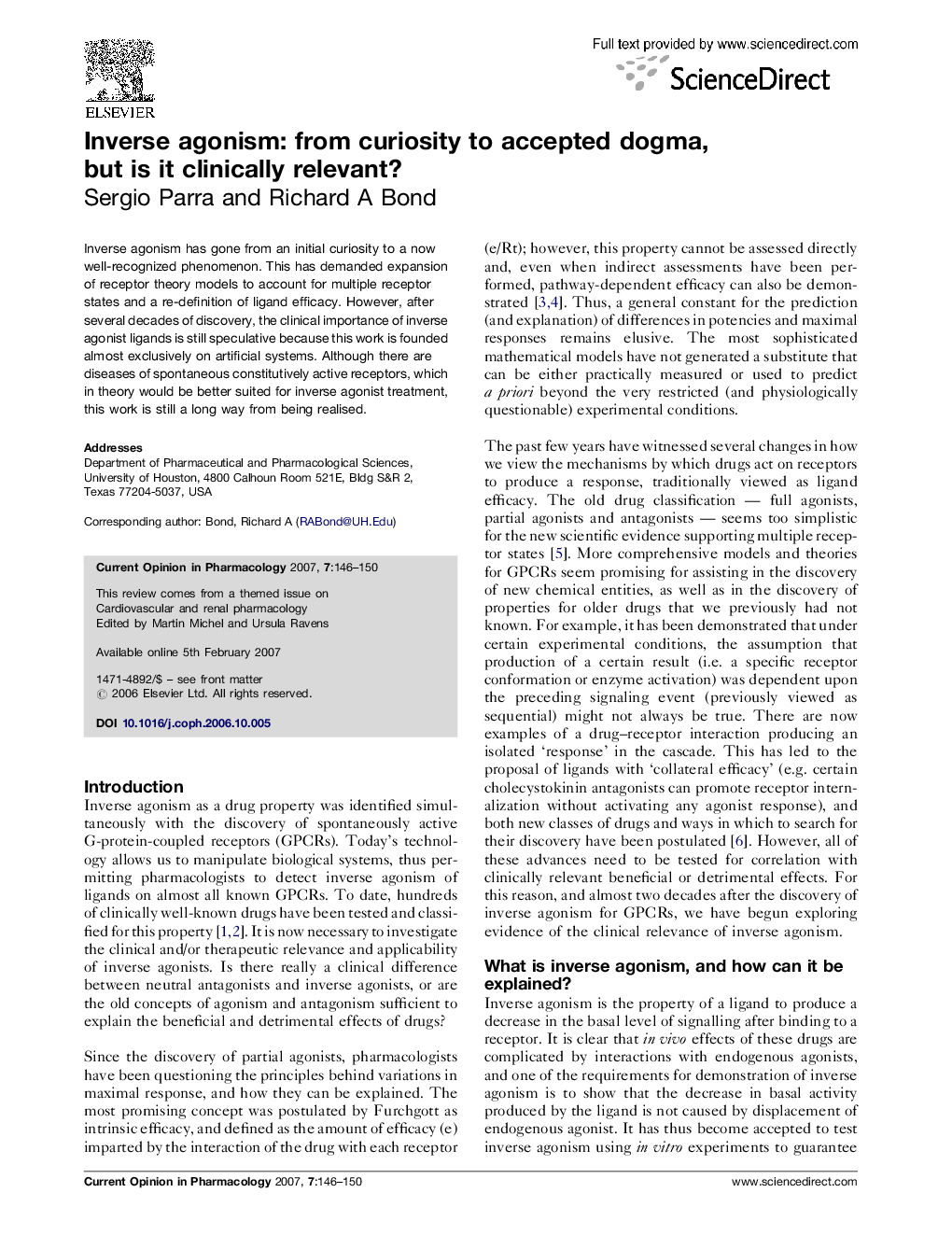| Article ID | Journal | Published Year | Pages | File Type |
|---|---|---|---|---|
| 2530641 | Current Opinion in Pharmacology | 2007 | 5 Pages |
Abstract
Inverse agonism has gone from an initial curiosity to a now well-recognized phenomenon. This has demanded expansion of receptor theory models to account for multiple receptor states and a re-definition of ligand efficacy. However, after several decades of discovery, the clinical importance of inverse agonist ligands is still speculative because this work is founded almost exclusively on artificial systems. Although there are diseases of spontaneous constitutively active receptors, which in theory would be better suited for inverse agonist treatment, this work is still a long way from being realised.
Related Topics
Life Sciences
Neuroscience
Cellular and Molecular Neuroscience
Authors
Sergio Parra, Richard A Bond,
